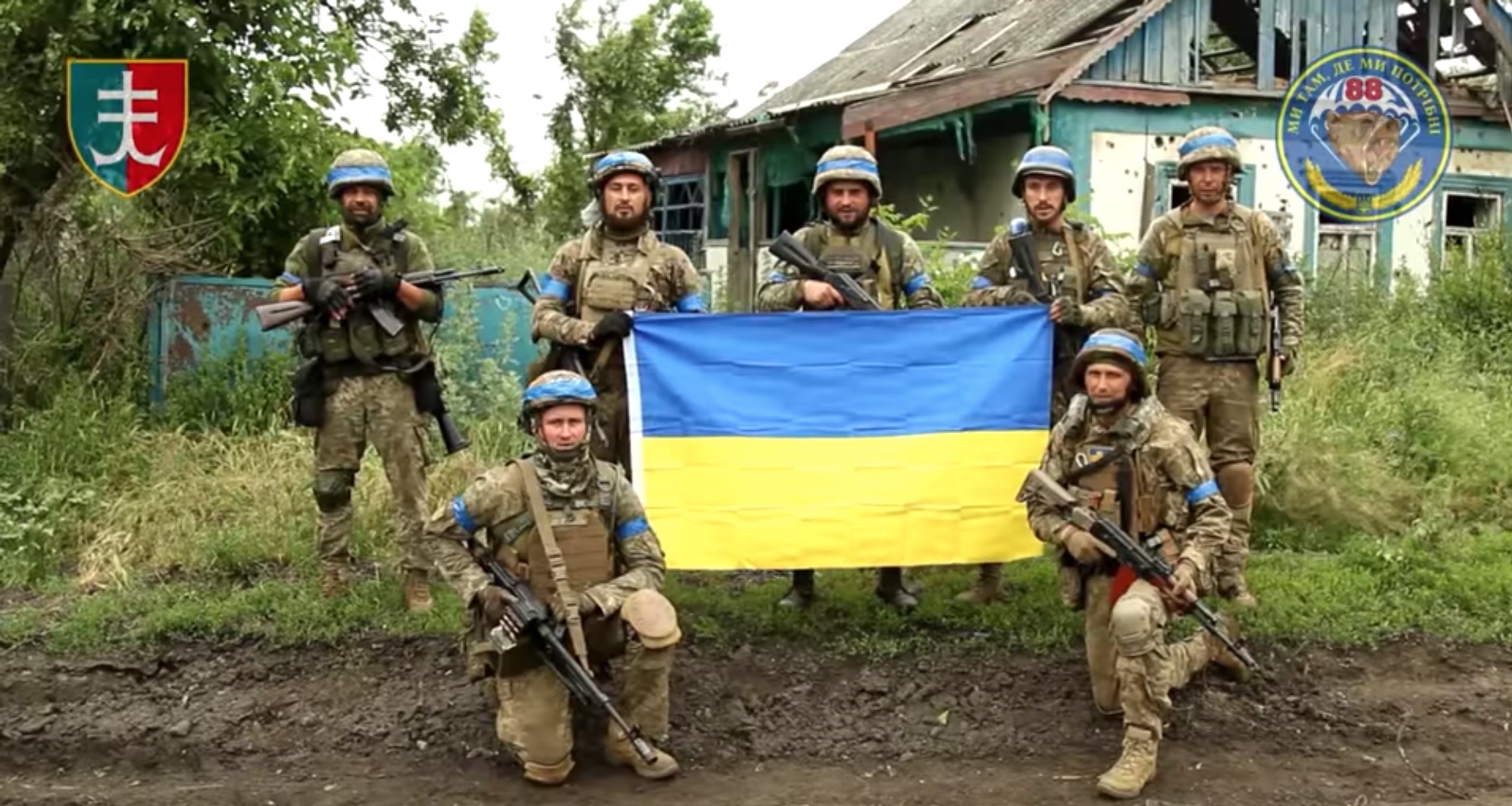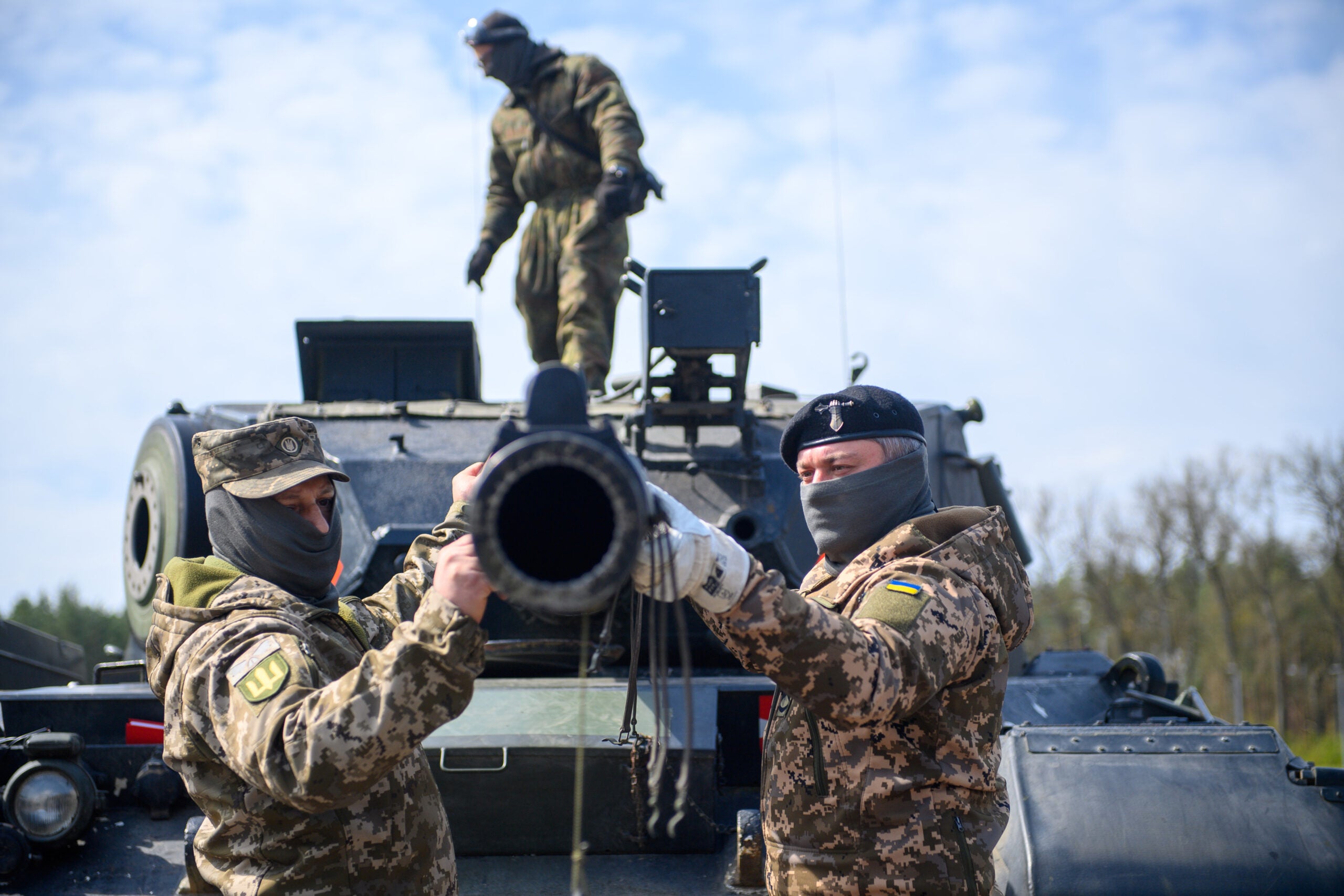Analysis: Is Ukraine winning the war against Russia?

With the Ukrainian counteroffensive underway, observers are looking for signs that Ukraine has finally gained the upper hand in the nearly 16-month old conflict.
Several experts told Task & Purpose that the Ukrainian counteroffensive needs more time to unfold before it becomes clear whether the tide of war has shifted in Ukraine’s favor.
“In the broad, I think the Ukrainians are slowly generating operational and tactical momentum at the moment,” said retired Australian Maj. Gen. Mick Ryan, an adjunct fellow with the Center for Strategic and International Studies think tank in Washington, D.C. “It is too early to say who has the strategic initiative, but my sense is that it is leaning more towards the Ukrainians each day.”
In an April 30 Substack article, Ryan wrote that some ways to measure the Ukrainian counteroffensive’s success include whether it disrupts the Russian military’s ability to command and control its forces and respond to Ukrainian attacks; how much Ukrainian territory is ultimately recaptured; and whether Ukraine’s supporters believe the counteroffensive’s results are worth the effort.
Subscribe to Task & Purpose Today. Get the latest military news and culture in your inbox daily.
With fighting in several sectors along a 600-mile front, no major breakthroughs have been reported so far, and the Ukrainians have measured their progress in some areas in meters.
“It’s premature to say that Ukraine is winning with this counteroffensive,” said John Herbst, who served as U.S. ambassador to Ukraine from 2003 to 2006. “It’s also premature to say, the way Russian media and Russian officials are saying, that they’re losing.”
Ukrainian forces claim to have recaptured about 37 square miles of territory, but they have also “taken some lumps,” said Herbst, director of the Eurasia Center at the Atlantic Council think tank in Washington, D.C.
Herbst added that it would be surprising if it were possible to tell if Ukraine is winning the war, given that it only launched its counteroffensive roughly 11 days ago.

The Ukrainian counter-offensive is still in its early stages, so Ukrainian troops are currently probing Russian positions for weak points and preparing the battlefield for the main effort to come, said retired Army Gen. David Petraeus, who led U.S. troops in Iraq during the surge and later commanded all U.S. and NATO forces in Afghanistan.
“Only a small number of the newly generated, Western-equipped armored brigades has been committed so far,” Petraeus told Task & Purpose. “And, as was to be expected, the early fighting has been very tough as Ukrainian elements have attacked in five different locations and are having to fight through multiple Russian defensive lines, obstacles, and mine fields, all of which are covered by direct and indirect fires.”
In order to break through Russian prepared defenses, the Ukrainians will have to conduct combined arms operations that orchestrate the actions of armored units, infantry, combat engineers, artillery, air defense systems, electronic warfare capabilities, drones, and other forces while ensuring follow-on forces are ready to exploit openings in the front lines, Petraeus said.
“If the Ukrainians can do that, then they likely will achieve significant results. And having just spent the bulk of a week in Kyiv, I think that is entirely possible, though it will certainly not be easy.” Petraeus observed.
Army Gen. Mark Milley, chairman of the Joint Chiefs of Staff, told reporters on Thursday that it is too soon to estimate how long the Ukrainian counteroffensive might last.
“There are several hundred thousand Russian troops dug in in prepared positions all along the front line, and Ukraine has begun their attack, and they’re making steady progress,” Milley told reporters during a news conference in Brussels, Belgium. “This is a very difficult fight. It’s a very violent fight and it will likely take a considerable amount of time and at high cost.”
It is important to distinguish the ongoing counteroffensive from Ukraine’s main attack, which has not yet taken place, retired Army Lt. Gen. Ben Hodges, former commander of U.S. Army Europe, wrote in a June 10 analysis for the Center for European Policy Analysis, a non-partisan research institute in Washington, D.C.
Hodges estimated that Ukraine has between seven and 12 armored brigades, some of which have Western equipment. Each brigade should have more than 250 armored vehicles, including tanks.
“When we see two or three of those brigades (around 500-750 armored vehicles) focused on a narrow front, it will then be possible to say that the main attack has probably started and where it’s happening,” Hodges wrote. “But even then, be careful. The Ukrainian General Staff will want to keep the Russians guessing about the location of the main attack for as long as possible, and they won’t be too bothered (and will probably welcome) Twitter getting it wrong.”
Although the counteroffensive’s outcome remains uncertain, it’s already clear that Russia will not achieve its strategic goal of bringing Ukraine under Moscow’s tight control, said Evelyn Farkas who served as deputy assistant secretary of defense for Russia, Ukraine, and Eurasia from 2012 to 2015.
“So, strategically, they have already lost in that they’ve failed to achieve that overriding objective that has motivated [Russian President] Vladimir Putin,” said Farkas, who is currently executive director of the McCain Institute, a think tank in Washington, D.C., that is part of Arizona State University. “It doesn’t mean he won’t keep trying, but he’s failed so far – and failed into the foreseeable future.”

The Russian military is also showing signs of strain after more than a year of war in Ukraine. It is unclear whether the conscript soldiers who have been drafted to replace Russia’s battlefield losses will continue to fight, and will they have the leadership necessary to be effective in combat, Farkas told Task & Purpose.
However, Ukraine will only accept an outcome of the war that restores its 1991 borders and also guarantees its future survival, said Elena Davlikanova, a democracy fellow with the Center for European Policy Analysis.
“The dangerous desire to force Ukraine to negotiate based on the results of this stage of military campaign is a threat to European security as it sends a clear signal – the West is ready to allow Russia to get what it wants – just bit by bit,” Davlikanova told Task & Purpose.
While Ukraine is grateful for the assistance it has received from Western countries so far, it will need even more military, diplomatic, and financial support from the West to achieve a final victory over the Russians, Davlikanova said.
Ukraine has already won several victories, including stopping the Russian attempt to capture Kyiv in the opening days of the conflict, Davlikanova said. Recent media reports of Ukrainian forces recapturing villages during the counteroffensive demonstrate Ukraine’s ability to liberate its own territory.
The recent destruction of the Nova Kakhovka dam – for which the Russians and Ukrainians have blamed each other – is an indication that Russia is resorting to scorched earth tactics in Ukraine out of desperation, Davlikanova said.
Ukrainian officials have warned that the loss of the dam could lead to a meltdown at the Zaporizhzhia Nuclear Power Plant, which the Russians have allegedly turned into a military base since capturing the plant March 2022. The Ukrainians have also accused Russian forces of preparing to blow up an ammonia plant in Crimea to create a chemical attack.
“Russian tactics on the battlefield is a clear indication that Ukraine has at least seized the initiative, if not turned the tide,” Davlikanova said.





